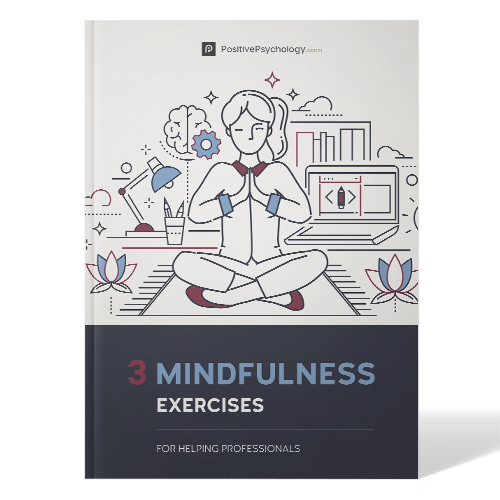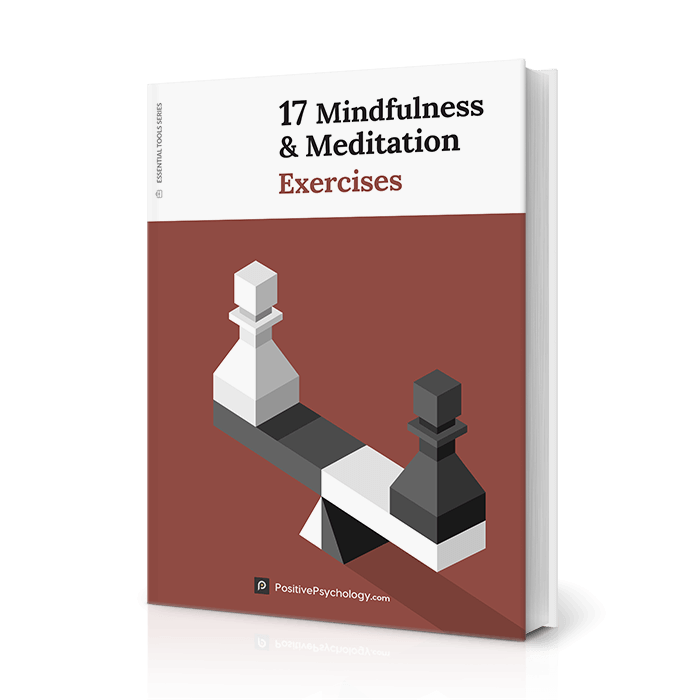60+ Benefits of Yoga for Mental & Physical Health
 Have you ever done yoga?
Have you ever done yoga?
For most people these days, the answer you get to that question is “yes.”
Yoga is one of the most popular physical activities and group classes in the United States, although it wasn’t always that way.
Yoga’s reputation started out in the West as something that hippies did for spiritual enlightenment after consuming one of several mind-altering drugs; however, today it is a much more mainstream and respected practice that centers on the physical and mental wellbeing of practitioners.
If you’ve given yoga a try, you know that it has the potential to be very effective in treating and soothing a wide range of illnesses, issues, diagnoses, and stressful situations. You also probably know that it’s much, much more than a simple exercise or stretching routine; it requires your brain as well as your body.
In fact, it’s one of the few physical activities that do a pretty thorough job of connecting your brain to your body.
If that sounds fascinating to you, read on to explore the relationship between yoga and psychology and look at the many benefits of yoga on the mental and physical health of men, women, and children.
Before you read on, we thought you might like to download our three Mindfulness Exercises for free. These science-based, comprehensive exercises will not only help you cultivate a sense of inner peace throughout your daily life but will also give you the tools to enhance the mindfulness of your clients, students, or employees.
This Article Contains:
- The Relationship Between Yoga and Psychology
- Yoga and Positive Psychology
- What Does the Research Say About Yoga and Mental Health?
- The Benefits of Yoga
- Benefits of Doing Yoga Every Day
- Is Yoga in the Morning More Beneficial?
- What is Nidra Meditation?
- 20 Quotes on the Benefits of Yoga
- A Take-Home Message
- References
The Relationship Between Yoga and Psychology
Although you may be familiar with the physical practice we call yoga, yoga is actually much more than stretching and holding poses; yoga is a more comprehensive practice—indeed, a lifestyle—that encompasses several life principles, like:
- Yama (moral code)
- Niyama (self-discipline)
- Asanas (postures or poses)
- Pranayama (mindfulness of breathing)
- Pratyahara (detachment from senses)
- Dharana (concentration)
- Dhyanna (meditation or positive, mindful focus on the present)
- Savasana (state of rest)
- Samadhi (ecstasy; Ivtzan & Papantoniou, 2014)
You’ll notice that only asanas and savasana are focused on physical experiences. The rest concern mental, emotional, and spiritual experiences.
This is because yoga is much more focused on the practitioner’s “inner” experience than their “outer” experience (i.e., worrying about the body). An authentic yoga practice demands introspection, reflection, and earnest consideration of the self. It is a way to connect with our own thoughts, feelings, beliefs, and core values, opening the window into our deeper and truer selves.
Viewed in this light, it’s hard to see yoga and psychology as separate subjects! However, as close as the connection is between yoga and psychology, it’s even more intimately related to the subfield of positive psychology.
Yoga and Positive Psychology
The link between yoga and positive psychology is a strong one; although yoga started with a slightly different focus, it is now commonly practiced in the West as an attempt to enhance wellbeing (Ivtzan & Papantoniou, 2014). Of course, wellbeing is a core topic in positive psychology, which explains the frequent use of yoga in intervention and exercises.
Further, yoga offers an excellent opportunity to enter flow, the state of being fully engaged and present in the moment with no attention paid to the time passing. Practicing yoga can help people cultivate mindfulness, develop greater awareness, and improve their ability to focus on what is at hand.
If you are interested in learning more about the connection between yoga and positive psychology, click here to read about a course on the link between the two subjects. You will learn:
- The history, core contributors, and traits researched and highlighted in positive psychology
- The inherent similarities between yoga and positive psychology explored through the Yoga Sutras and the Paths of Yoga
- How the Yamas and the Niyamas compare to concepts of positive psychology
- Practical interventions you can use in your yoga practice and your life
- The use and natural connection of the YogaFit Essence and Transformational Language
- Specialized cueing and pose selection
If you’re ready to move on to a slightly different tack and learn about yoga and mental health activities, go on to the section.
What Does the Research Say About Yoga and Mental Health?
Tons of work has been conducted on the impacts of yoga on mental health.
The overall consensus is that yoga has many positive effects on mental health that go beyond the effects of other low- to-medium-impact physical activity and these effects are likely due to chemical changes in the brain (Grazioplene, 2012).
It turns out that practicing yoga actually facilitates a greater release of gamma-Aminobutyric acid (GABA) from the thalamus; GABA acts as a sort of “grand inhibitor” of the brain, suppressing neural activity.
This can mimic the effects of anti-anxiety drugs and alcohol—yep, doing yoga can make you feel like you just had a nice, relaxing cocktail! This finding indicates that yoga can actually work to help to “reset” your brain to a calmer, more collected state, giving you the baseline mood you need to deal with the stress you encounter every day (Grazioplene, 2012).
Yoga makes an excellent alternative or complementary treatment for issues that require medication and/or therapy, as it is natural, accessible for all, and relatively easy to engage in. In addition, it is a good choice because it is one of the few treatment activities that connect the mind to the body.
In therapy, you generally don’t use your body in any significant way; when taking medication, you generally don’t emphasize the mind-body connection, or even think about it much—after all, you just hope it works, and you may not care much how it works!
The most important pieces of equipment you need for doing yoga are your body and your mind.
Rodney Yee
Practicing yoga emphasizes the connection between our minds and our bodies, and encourages you to use both at the same time. A yoga session requires precise and mindful movement, but it also calls for mindful thought and enhanced awareness.
Unlike when you go for a run or lift weights, yoga is only in “full effect” when both mind and body are completely engaged. This marriage of your mental state and your physical state offers a unique opportunity to make a powerful impact on your mental health.
How strong is the potential impact of a “yoga treatment?” So strong that some therapists and doctors have begun to prescribe it as a complementary treatment on top of medication, talk therapy, or both; sometimes, it is even pursued as the only method of treatment, although that is generally not advised for more severe diagnoses.
Yoga has a sly, clever way of short circuiting the mental patterns that cause anxiety.
Baxter Bal
Support for yoga as a supplement to other types of treatment comes from a groundbreaking 2007 study of depressed patients who were taking antidepressant medication but were only in partial remission.
The researchers observed that participants who engaged in regular yoga practice (at least three times a week for eight weeks) experienced significantly fewer symptoms of depression, anxiety, and neuroticism. Some participants even achieved remission from their mental illness, and many participants reported better mood overall (Novotney, 2009).
The Benefits of Yoga
You’ve likely heard about the many benefits of yoga that go beyond alleviating or buffering against mental illness; benefits like:
- It builds confidence
- It helps you learn to breathe, both literally and metaphorically
- It makes you more aware of your posture at all times
- It makes you more mindful
- It boosts your strength and endurance
- It helps relieve stress (Rues, n.d.)
Aside from the anecdotal stories about the wonders of regular yoga practice, there is also peer-reviewed evidence to support the benefits of yoga.
For example, reviews of the literature suggest that yoga is at least somewhat effective in lessening symptoms of depression, reducing fatigue, relieving anxiety, and reducing or acting as a buffer against stress, and often boosts participants’ feelings of self-confidence and self-esteem (Büssing, Michalsen, Khalsa, Telles, & Sherman, 2012).
Yoga can be especially helpful for those struggling with post-traumatic stress disorder (PTSD). Several studies on yoga applied to PTSD treatment show that yoga can have outcomes similar to those of talk therapy (Novotney, 2009). The results of yoga on PTSD symptoms highlights this link between the body and the brain, and the potential of yoga to facilitate that connection and skip right over the barrier.
Many PTSD symptoms are physical, such as the increased heart rate and perspiration that sometimes accompany “flashbacks” or vivid memories of trauma. Yoga may be especially helpful in addressing symptoms such as these, as it can target the physical symptoms of stress, anxiety, fear, and depression.
The Physical Benefits of Yoga
The beauty is that people often come here for the stretch, and leave with a lot more.
Liza Ciano
Overall, although yoga may seem like a relatively mild form of exercise, regular yoga practice can result in the same health benefits as many other types of exercise but with less of an impact on joints and more relaxation!
In addition to having the same impacts on general health as other types of exercise, there is some evidence that yoga is even more beneficial than most types of exercise when it comes to:
- Increasing balance
- Improving baroreflex sensitivity
- Reducing fatigue
- Enhancing flexibility
- Healthy heart rate
- Healthy heart rate variability
- Improved kidney function
- Lessened or buffered menopausal symptoms
- Relieving pain
- Relieving or inhibiting psychotic symptoms
- Improving quality of life
- Reducing sleep disturbances
- Improving social and occupational functioning
- Increasing strength
- Lowering obesity
- Reducing stress
- Reducing cholesterol (Ross & Thomas, 2009; Ross, Friedmann, Bevans, & Thomas, 2013)
Yoga can also help you beat the symptoms of insomnia and depression and boost your energy, happiness, and encourage a healthy weight.
In one study, participants who engaged in a daily 45-minute yoga practice right before going to bed for eight weeks experienced tremendous decreases in the severity of their insomnia (Novotney, 2009).
In another study, participants who practiced yoga more regularly were also more likely to report higher energy, better moods, greater happiness, more fulfilling relationships with others, and more satisfying lives in general (Ross et al., 2013).
Finally, an overview on the general benefits of yoga found that those who engage in the practice regularly often experience increases in self-efficacy and self-confidence, along with enhancements in balance, flexibility, strength, and weight loss (Büssing et al., 2012).
The same study found that yoga has been reported to boost cardiovascular endurance, reduce hypertension, enhance pulmonary function, and more. However, these results are still fairly preliminary, so take these findings with a grain of salt!
The Benefits of Yoga for Men
Besides the physical and mental benefits listed above that are great outcomes for anyone who engages in yoga, there are also many benefits that men often specifically appreciate about practicing yoga.
For example, yoga can help men:
- Enhance their athletic performance through improved flexibility, internal awareness, better respiratory capacity, better circulation and motion efficiency, and greater energy.
- Prevent injury and speed up recovery through the healing of inflamed muscles, tissue, joints, and fascia, as well as the restoring of connective tissue and increased body awareness, leading to more caution and less injury.
- Boost their sex life, by enhancing desire, sexual satisfaction, performance, confidence, partner synchronization, control, and even better orgasms!
- Optimize their muscle tone via increased delivery of oxygen to the muscles.
- Lower their stress level through movement.
- Increase their mental agility through the sharpening of the mind and improved cognitive function that comes with the meditative exercise of yoga (Ross, 2018).
This list provides some pretty good reasons for curious men to give yoga a try! Don’t get jealous yet, ladies—there are also some benefits of yoga that speak to women in particular.
The Benefits of Yoga for Women
The benefits of yoga that are often specifically appreciated by women include:
- Helping you to deal with hormonal changes during your cycle and during menopause.
- Soothing worry and anxiety caused by a health crisis or serious diagnosis.
- Lessening stress and reducing the severity and frequency of anxiety and depression symptoms.
- Improving your posture.
- Improving your appearance through standing taller, feeling more confident, and more effective weight management (Cespedes, 2018).
In addition, although we noted some of the impacts of yoga on PTSD earlier, it’s worth emphasizing that it may be particularly helpful for women who have suffered some kind of trauma.
The Trauma Center at the Justice Resource Institute in Brookline, Massachusetts recruited a group of women who had been diagnosed with PTSD to engage in an experimental yoga treatment. The women attended eight 75-minute Hatha yoga sessions over the course of a few weeks.
Those who participated reported significantly reduced PTSD symptoms compared with women in a talk therapy group (Novotney, 2009). This might not represent the average results of yoga for PTSD, but there are at least some cases where it’s as effective as seeing a licensed professional therapist! At that price (free or very cheap), yoga is definitely worth a try.
Yoga in the Classroom: The Benefits for Kids
If at any point in this piece so far you’ve thought to yourself, “These benefits are great, but those who could really benefit from more relaxation, awareness, better focus, and enhanced self-esteem are children and young people,” you’re on to something!
There has been a lot of interest in yoga for kids for these very reasons; kids have to deal with many of the same stressors and triggers that adults do, but without all of the decades of experiences to teach them what is most effective and the social awareness to know what is appropriate.
In addition, the rise of constant social media has made it even more difficult to simply sit quietly and think, or even sit quietly and just exist for a few moments. Children are also dealing with as much pressure as ever to succeed in school, and perhaps even more pressure from the added competition that our increasingly globalized world introduces to them (Hagen & Nayar, 2014).
Given these truths, it seems that yoga can perhaps help to fill a vital gap in children’s social, emotional, and physical development. Research shows that it contributes to enhanced physical and mental wellbeing, and may improve resilience, mood, and self-regulation skills (Hagen & Nayar, 2014).
For example, an evaluation of yoga for adolescents in secondary school showed that students who participated in the program experienced significant improvements in ability to control their anger and reduction in fatigue and/or inertia (Khalsa, Hickey-Schultz, Cohen, Steiner, & Cope, 2011).
Further, research has found that regularly practicing yoga can have a positive impact on the following aspects of a student’s or child’s life:
- Their wellbeing
- Their academic performance
- Their emotional balance
- Average heart rate
- Experience of anxiety (i.e., yoga reduces anxiety)
- Promoting mental health
- Increasing resilience and self-regulation (Hagen & Nayar, 2014).
Yoga in Long-Term Care: The Benefits for the Elderly
Yoga is the fountain of youth. You’re only as young as your spine is flexible.
Bob Harper
Although yoga can have some fabulous benefits for children, it can also be extremely effective for improving both the physical and mental health of the elderly. Of course, some of the moves and poses are modified to suit more fragile bodies, but they still provide a challenging and invigorating experience for the elderly.
In Taiwan, researchers sought out elderly residents in a long-term care facility who were diagnosed with mild to moderate dementia and invited them to join a gentle yoga program. The program lasted for 12 weeks, with three 55-minute sessions per week. The experimental group participated in the yoga classes while the control group maintained their usual daily activities.
The results of this study showed that older adults who engaged in regular yoga practice enjoyed several health benefits, including:
- Lowered blood pressure
- Reduced respiration rate
- Strengthened cardiopulmonary fitness
- Enhanced body flexibility
- Improved muscle strength and endurance
- Improved balance
- Increased joints motion
- Reduced depressive states
- Reduced problem behaviors (Fan & Chen, 2011)
All of these are positive outcomes for anybody who practices yoga, but they are especially exciting to see in older adults who are struggling with cognitive decline.
Benefits of Doing Yoga Every Day
Any time you take advantage of an opportunity to do yoga, you’re choosing to spend time and energy investing in yourself. No matter how often you do it, it’s always a good decision!
However, as you have likely been told by a yoga teacher, doctor, or other individuals knowledgeable about this practice, you can only fully harness the power of yoga when you do it on a regular and frequent basis.
What are the benefits of practicing yoga every day? It depends on who you ask, but you’ll probably get answers like:
- Yoga just makes you feel better!
- Yoga increases your flexibility.
- Yoga helps you be more productive with your time.
- Yoga gives you more energy.
- Yoga boosts your metabolism.
- Yoga helps you focus and become more mindful.
- Yoga helps you sleep better.
- Yoga can improve the health of your skin.
- Yoga strengthens your joints.
- Yoga lubricates and strengthens your spine.
- Yoga can improve your posture, both in and out of yoga class.
- Yoga can reduce your anxiety.
- Yoga enhances your sense of gratitude.
- Yoga may inhibit or combat inflammation in the body.
- Yoga increases your strength.
- Yoga improves your balance (Newlyn, 2016B; Russo, 2017)
You may get some of these benefits by practicing yoga once in a while, but to maintain these benefits you will need to commit to a more regular yoga routine.
As yoga-centric Murdock Movement founder Amanda Murdock states,
“a single yoga class per month will essentially have you starting from scratch each time you walk on the mat… it can be difficult to listen to your body when you are trying to figure out what you are doing in the class”
(Kelly, 2017).
Instead, Murdock notes that practicing several times a week will net you more long-lasting benefits like those listed above.
You don’t necessarily need to practice every single day to reap these long-term benefits, but aiming for at least twice a week is a good goal to get all the benefits that yoga has to offer!
Is Yoga in the Morning More Beneficial?

Basically, it comes down to personal preference; do you enjoy doing yoga in the morning? Do you find it invigorating and energizing? Or do you feel relaxed and restful after yoga, and ready to head straight to bed?
If you think you might enjoy doing yoga in the morning, it’s certainly a good idea to give it a try! Here are a few reasons why morning yoga is worth a shot:
- The movement and stretching help you get rid of the “fuzz” that built up around your muscles during the night.
- Practicing yoga as soon as you get up can help lower your cortisol levels and resist unnecessary stress.
- Morning yoga can be just as efficient as coffee in waking you up and energizing you for your day.
- Doing yoga first thing boosts your mood for the rest of the day.
- It helps you avoid procrastinating since you can cross it off your to-do list right away.
- A morning yoga session can put you in a mindful and aware state of mind as you continue with your day.
- Yoga early in the day can set you up for regular and relaxing breathing from that moment until your head hits the pillow at night.
- It can bias your mind towards the positive right from the start of your day.
- Morning yoga may also bias you to continue making healthy choices all day.
- It may actually turn you into a morning person (Newlyn, 2016A).
If none of these reasons sound good enough to pull you out of bed earlier than you have your current alarm set, don’t worry! Practicing whenever you can is still better than not practicing at all.
What is Nidra Meditation?
And speaking of doing “nothing at all,” have you heard of yoga nidra, or Nidra meditation?
If a more traditional vinyasa flow seems too difficult for you or if you are nursing an illness or an injury, Nidra meditation is one of the ways you can keep up your yoga practice without putting your body through unnecessary and unhelpful added stress.
Nidra meditation is a form of meditation that you engage in while lying on the floor (or sitting, if lying on the floor is not feasible). The good news about Nidra meditation is that there is no way to “do it wrong”!
The even better news is that falling asleep is a-okay in Nidra meditation! If that doesn’t convince you to give meditation a try, I’m not sure what will—after all, you either get the benefits of meditation or the benefits of a quick nap. It’s a win either way!
On a more serious note, Nidra meditation is a guided experience that can generally range from 5 minutes to 60 minutes, and all you need to do is listen and follow along to the voice guiding you. It provides participants with a relaxing and peaceful way to engage in meditation, improve breath awareness, and decrease stress.
In addition, it offers practitioners a chance to learn more about their deeper selves, bringing them “face to face” with their challenges and obstacles (Jeraci, n.d.).
Not only has Nidra meditation been anecdotally effective, there have also large-scale studies on its benefits. In 2006, the U.S. Department of Defense tested yoga Nidra with active-duty soldiers who were returning from the Middle East with symptoms of PTSD and found that those who participated in yoga Nidra reported decreases in many PTSD-related symptoms, including insomnia, depression, fear, and anxiety.
They also often experienced better interpersonal relationships and a heightened sense of control over their own lives (Novotney, 2009).
It’s easy to see how such a calming and centering practice can have such positive impacts on those suffering from PTSD, but the benefits are truly available for anyone who is interested in giving it a shot.
20 Quotes on the Benefits of Yoga
Not convinced on yoga yet? Or perhaps you’re trying to convince someone else of how worthwhile an endeavor yoga is? Or, maybe you’re just looking for some quotes to post on your mirror as inspiration to practice when you’re feeling lazy.
Whatever your reasons, below are some of the best quotes on the benefits of practicing yoga. Write them down or bookmark this page and come back to them whenever you need a shot of motivation!
Yoga is the perfect opportunity to be curious about who you are.
Jason Crandell
Yoga means addition – addition of energy, strength, and beauty to body, mind, and soul.
Amit Ray
Yoga is the journey of the self, through the self, to the self.
The Bhagavad Gita
Yoga is invigoration in relaxation. Freedom in routine. Confidence through self-control. Energy within and energy without.
The Bhagavad Gita
Yoga teaches us to cure what need not be endured and endure what cannot be cured.
B. K. S. Iyengar
Yoga allows you to find an inner peace that is not ruffled and riled by the endless stresses and struggles of life.
B. K. S. Iyengar
Yoga teaches you how to listen to your body.
Mariel Hemingway
Yoga is not a work-out, it is a work-in. And this is the point of spiritual practice; to make us teachable, to open up our hearts and focus our awareness so that we can know what we already know and be who we already are.
Rolf Gates
The body benefits from movement, and the mind benefits from stillness.
Sakyong Mipham
Yoga does not change the way we see things, it transforms the person who sees.
B. K. S. Iyengar
Yoga is about clearing away whatever is in us that prevents our living in the most full and whole way. With yoga, we become aware of how and where we are restricted—in body, mind, and heart—and how gradually to open these blockages. As these blockages are cleared, our energy is freed. We start to feel more harmonious, more at one with ourselves. Our lives begin to flow—or we begin to flor more in our lives.
Cybele Tomlinson
Yoga is a way of moving into stillness in order to experience the truth of who you are.
Erich Schiffmann
The reward for doing yoga well is simple—you get to do a better job at living a fulfilling life.
Randal Williams
When you do yoga—the deep breathing, the stretching, the movements that release muscle tension, the relaxed focus on being present in your body—you initiate a process that turns the fight or flight system off and the relaxation response on. That has a dramatic effect on the body. The heartbeat slows, respiration decreases, blood pressure decreases. The body seizes this chance to turn on the healing mechanisms.
Richard Faulds
Yoga is not a religion. It is a science, science of wellbeing, science of youthfulness, science of integrating body, mind, and soul.
Amit Ray
In truth, yoga doesn’t take time—it gives time.
Ganga White
Yoga encourages you to focus on your breathing, and the sensations in your body.
Jamie Zimmerman, MD
While most exercise gives you a choice to either zone in or zone out, yoga encourages you to return to the present and pay attention.
Jamie Zimmerman, MD
Yoga can reduce high blood pressure, bad cholesterol, and stress, all risk factors for heart disease.
Larry Phillips, MD
Yoga is an important life skill tool for children and young people to cope with stress and self-regulation in a life-long perspective.
Ingunn Hagen & Usha S. Nayar
A Take-Home Message
I hope this piece has given you a solid understanding of the many, many benefits of practicing yoga. Clearly, yoga is about much more than just “getting strong” or “getting flexible;” it’s about increasing our mind’s strength and flexibility as well.
It’s about opening ourselves up to new opportunities and new perspectives and identifying some of our innermost thoughts, feelings, and goals to ensure we are living authentically and in harmony with our values.
Although yoga can certainly be enjoyed as simply a method of working up a sweat, improving your posture and flexibility, and toning up your muscles, it has the potential to be so much more if you allow it to. Yoga can help you avoid unnecessary stress and act as a buffer between you and that stress which you cannot avoid in life.
It can help you deal with a mental illness or a health crisis,
The yoga pose that you avoid the most you need the most.
Anonymous
However, these benefits are only available to those who are willing to reach for them.
Taking the easy way—going to yoga class only once every few weeks, spending most of your session in child’s pose, or quitting every time a pose gets tough to hold—won’t bring you the amazing results you read about in this piece. Only sustained effort and commitment can do that.
It might be a little scary (and a lot difficult) to make such a commitment, but you can do it! Believe in yourself, work towards your goals, and forgive yourself when you slip up; these are the keys to success in just about any endeavor, and a healthy and satisfying yoga practice is no different.
What is your experience with yoga? Do you find it helps improve your mood or makes you feel great physically? Are there any other benefits you experience that we didn’t touch on here? We want to hear from you, so let us know in the comments section below!
Thanks for reading, all!
And of course, no post on yoga would be complete if ended without the traditional closure to class:
Namaste.
We hope you enjoyed reading this article. Don’t forget to download our three Mindfulness Exercises for free.
- Büssing, A., Michalsen, A., Khalsa, S. B. S., Telles, S., & Sherman, K. J. (2012). Effects of yoga on mental and physical health: A short summary of reviews. Evidence-Based Contemporary and Alternative Medicine, 2012.
- Cespedes, A. (2018). What are the health benefits of yoga for women? Live Strong. Retrieved from https://www.livestrong.com/article/50160-ramdev-yoga-hair-growth/
- Fan, J., & Chen, K. (2011). Using silver yoga exercises to promote physical and mental health of elders with dementia in long-term care facilities. International Psychogeriatrics, 23, 1222-1230.
- Grazioplene, R. (2012). This is your brain on yoga: How regular yoga practice changes brain chemistry and influences well-being. Psychology Today. Retrieved from https://www.psychologytoday.com/us/blog/quilted-science/201209/is-your-brain-yoga
- Hagen, I., & Nayar, U. (2014). Yoga for children and young people’s mental health and well-being: Research review and reflections on the mental health potentials of yoga. Frontiers in Psychiatry, 5, 35.
- Ivtzan, I., & Papantoniou, A. (2014). Yoga meets positive psychology: Examining the integration of hedonic (gratitude) and eudaimonic (meaning) wellbeing in relation to the extent of yoga practice. Journal of Bodywork and Movement Therapies, 18, 183-189.
- Jeraci, A. R. (n.d.). 5 benefits of yoga nidra. Yoga International. Retrieved from https://yogainternational.com/article/view/5-benefits-of-yoga-nidra
- Kelly, E. (2017). Here’s how much yoga it takes to truly see results. Greatist. Retrieved from https://greatist.com/move/how-much-yoga-to-see-results
- Khalsa, S. B. S., Hickey-Schultz, L., Cohen, D., Steiner, N., & Cope, S. (2011). Evaluation of the mental health benefits of yoga in a secondary school: A preliminary randomized controlled trial. The Journal of Behavioral Health Services & Research, 39, 80-90.
- Newlyn, E. (2016A). 21 reasons to practice yoga in the morning. Ekhart Yoga. Retrieved from https://www.ekhartyoga.com/articles/21-reasons-to-practise-yoga-in-the-morning
- Newlyn, E. (2016B). 30 benefits of a daily yoga practice. Ekhart Yoga. Retrieved from https://www.ekhartyoga.com/articles/30-benefits-of-a-daily-yoga-practice
- Novotney, A. (2009). Yoga as a practice tool. Monitor on Psychology, 40. [Online publication]. Retrieved from http://www.apa.org/monitor/2009/11/yoga.aspx
- Ross, R. (2018). Yoga benefits for men. Live Strong. Retrieved from https://www.livestrong.com/article/350470-yoga-benefits-for-men/
- Ross, A., Friedmann, E., Bevans, M., & Thomas, S. (2013). National survey of yoga practitioners: Mental and physical health benefits. Complementary Therapies in Medicine, 21, 313-323.
- Ross, A., & Thomas, S. (2009). The health benefits of yoga and exercise: A review of comparison studies. The Journal of Alternative and Complementary Medicine, 16.
- Rues, T. (n.d.). 8 amazing benefits I realized after doing yoga every day. Lifehack. Retrieved from https://www.lifehack.org/437677/8-benefits-of-doing-yoga-every-day
- Russo, L. (2017). 25 reasons to do yoga every single day. Mind Body Green. Retrieved from https://www.mindbodygreen.com/0-29985/25-reasons-to-do-yoga-every-single-day.html
Let us know your thoughts
Read other articles by their category
- Body & Brain (49)
- Coaching & Application (57)
- Compassion (26)
- Counseling (51)
- Emotional Intelligence (24)
- Gratitude (18)
- Grief & Bereavement (21)
- Happiness & SWB (40)
- Meaning & Values (26)
- Meditation (20)
- Mindfulness (45)
- Motivation & Goals (45)
- Optimism & Mindset (34)
- Positive CBT (28)
- Positive Communication (20)
- Positive Education (47)
- Positive Emotions (32)
- Positive Leadership (18)
- Positive Parenting (4)
- Positive Psychology (33)
- Positive Workplace (37)
- Productivity (16)
- Relationships (46)
- Resilience & Coping (36)
- Self Awareness (21)
- Self Esteem (37)
- Strengths & Virtues (31)
- Stress & Burnout Prevention (34)
- Theory & Books (46)
- Therapy Exercises (37)
- Types of Therapy (64)







What our readers think
This is a great piece of writing with a lot of useful information! I really enjoyed the way the story was presented and the writing style was very engaging. I’m looking forward to reading more posts from you in the future! Cheers!
Thank you for sharing this informative post.
Manuka honey has been shown to improve the look of your skin. It can help slough away dead cell debris and maintain your skin clean by balancing its PH level. Its anti-inflammatory properties aid in the reduction of local inflammation caused by acne. Manuka honey acts as an antibacterial, leaving fewer germs in the pores that may cause acne. I’ve been dealing with acne all my life and I’ve found that using Manuka honey has helped to improve my complexion. I discovered one on Amazon: https://www.amazon.co.uk/puregold that received great reviews and was of good quality.
Love this article its very helpful.
Nice, I don’t know yet the types of yoga it will be very helpful to all keep posting like this. We have to keep fit our mind and body so I intake a vegan protein you may also use
Great article, i love yoga. Have been practising it for over 12 years now. I always wonder what made others start practising yoga?
Thanks for sharing this informative yoga step with us which helps in weight loss at home. I enjoyed reading this informative blog.
A lovely, inspiring article. I could read it again and again.